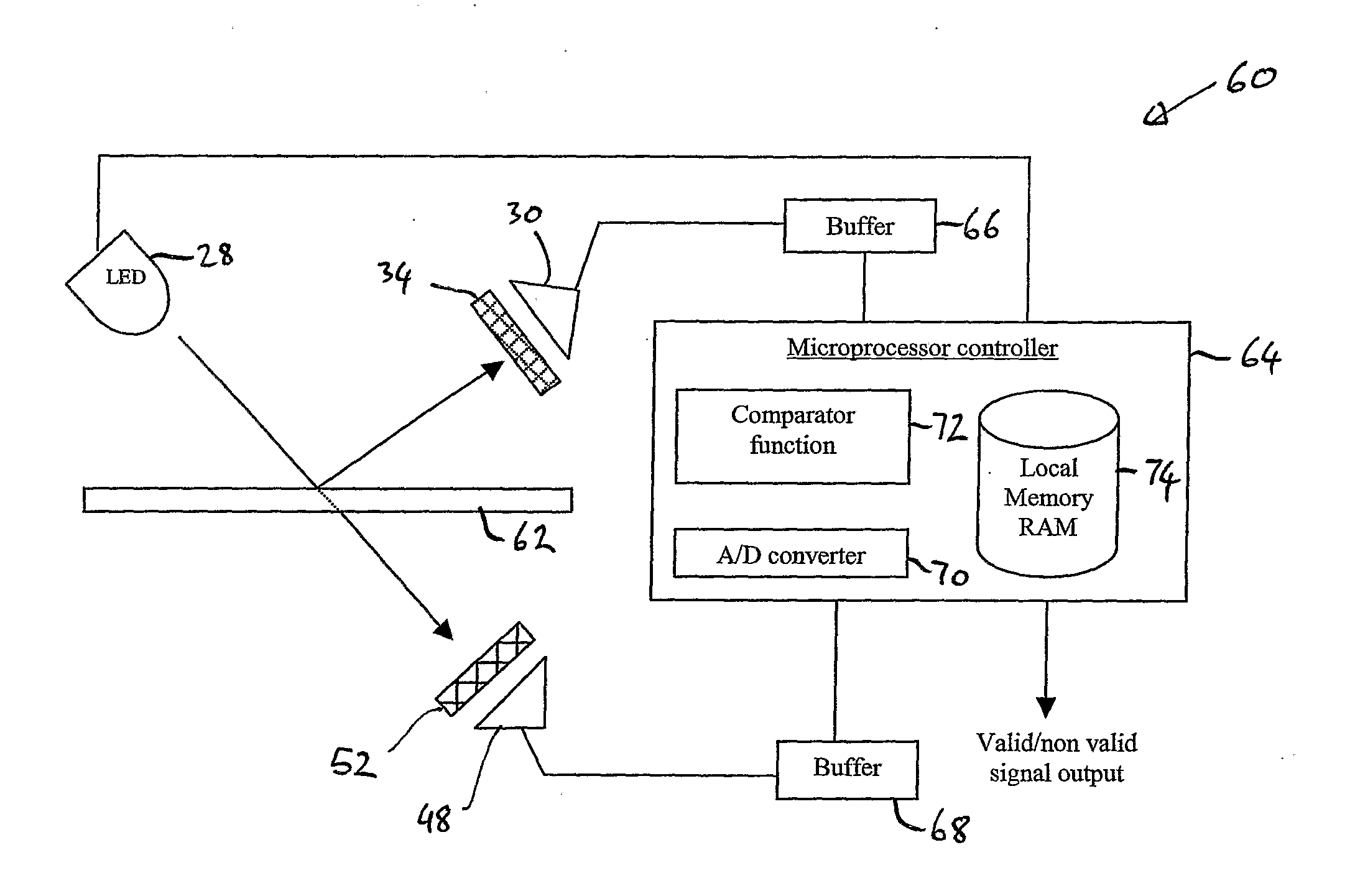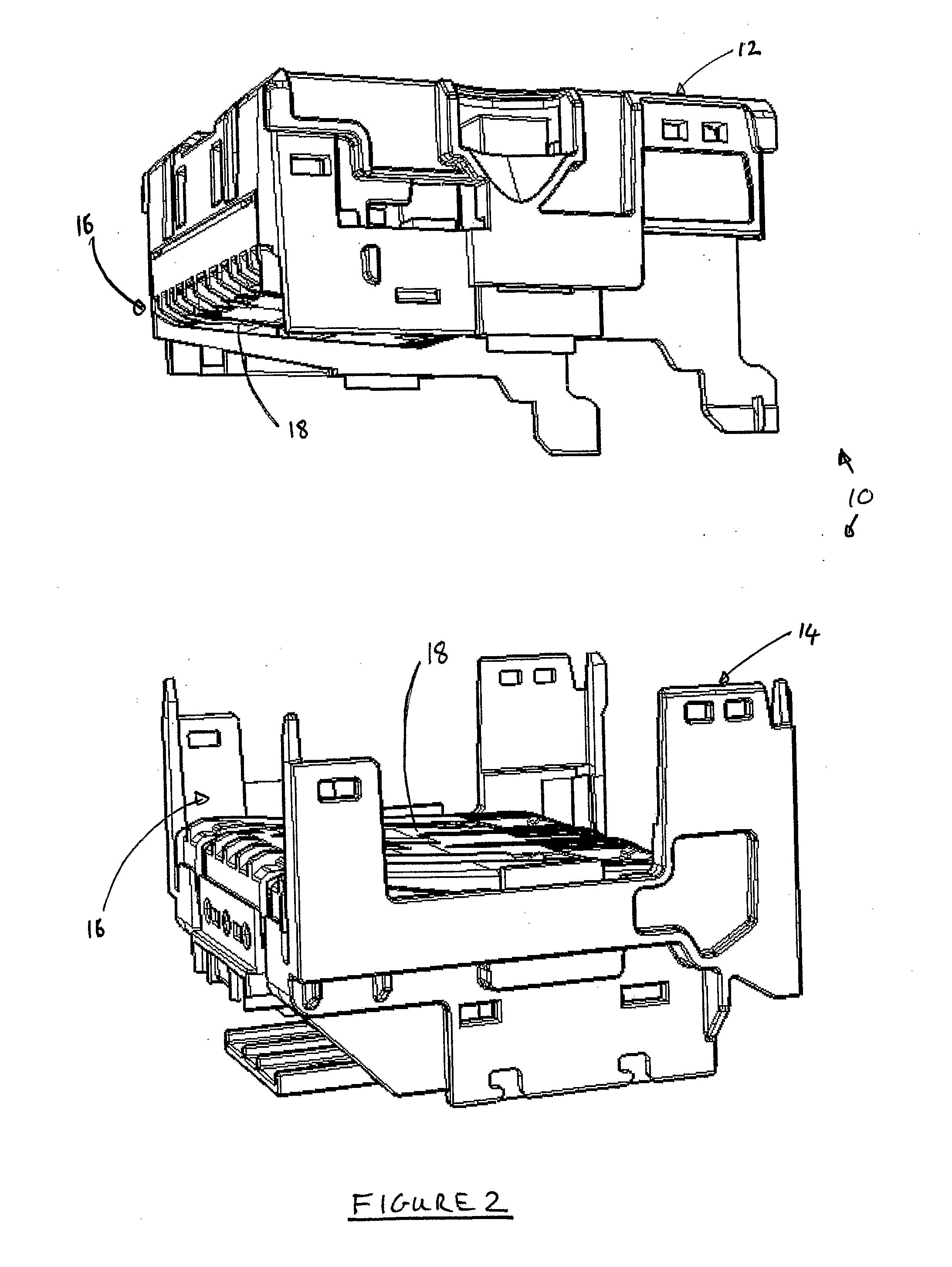Improvements relating to banknote validation
a banknote and validation technology, applied in the field of banknote validation, can solve the problems of increasing the the large amount of data, and the relatively high cost of the banknote validation tool, and achieve the effect of low cost, higher wavelength emission, and easy comparison between a valid and a false bankno
- Summary
- Abstract
- Description
- Claims
- Application Information
AI Technical Summary
Benefits of technology
Problems solved by technology
Method used
Image
Examples
first embodiment
[0033]Referring to FIG. 1 there is shown a banknote validator housing 10 incorporating a sensing arrangement according to the present invention. The banknote validator housing 10 comprises an upper part 12 and a lower part 14, which are arranged to releasably interlock to form the validator housing 10. When locked together, the upper and lower parts 12, 14 define a banknote validation pathway that commences at a note entrance 16. For the purposes of this invention, the banknote housing 10 represents the banknote validator. Even though all of the validator's functioning parts are not shown, the essential ones to this invention are.
[0034]FIG. 2 shows the upper and lower parts 12, 14 of the banknote validator housing 10 in separated positions. Here the banknote validation pathway 18 can be seen on both parts 12, 14 starting at the note entrance 16.
[0035]Whilst it is possible to simply have a single sensing arrangement provided on one side of the banknote path, in this embodiment each o...
PUM
 Login to View More
Login to View More Abstract
Description
Claims
Application Information
 Login to View More
Login to View More - R&D
- Intellectual Property
- Life Sciences
- Materials
- Tech Scout
- Unparalleled Data Quality
- Higher Quality Content
- 60% Fewer Hallucinations
Browse by: Latest US Patents, China's latest patents, Technical Efficacy Thesaurus, Application Domain, Technology Topic, Popular Technical Reports.
© 2025 PatSnap. All rights reserved.Legal|Privacy policy|Modern Slavery Act Transparency Statement|Sitemap|About US| Contact US: help@patsnap.com



